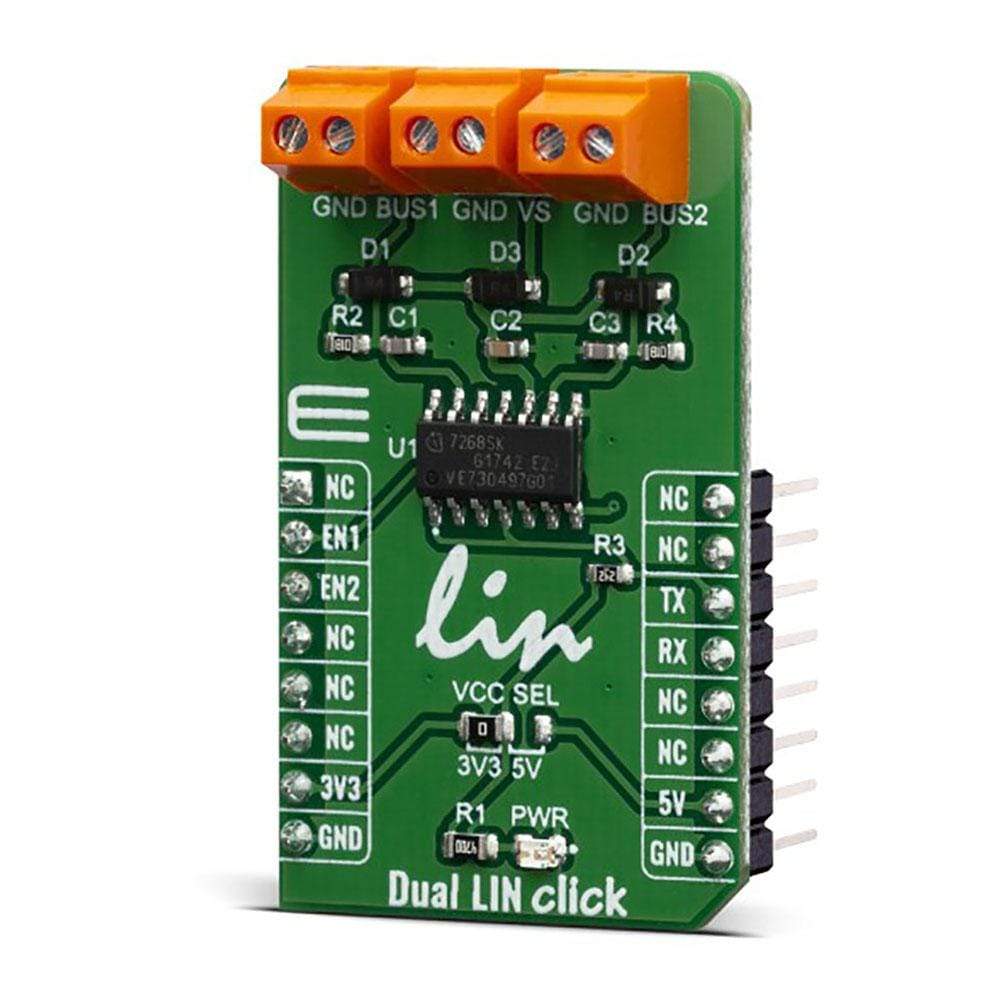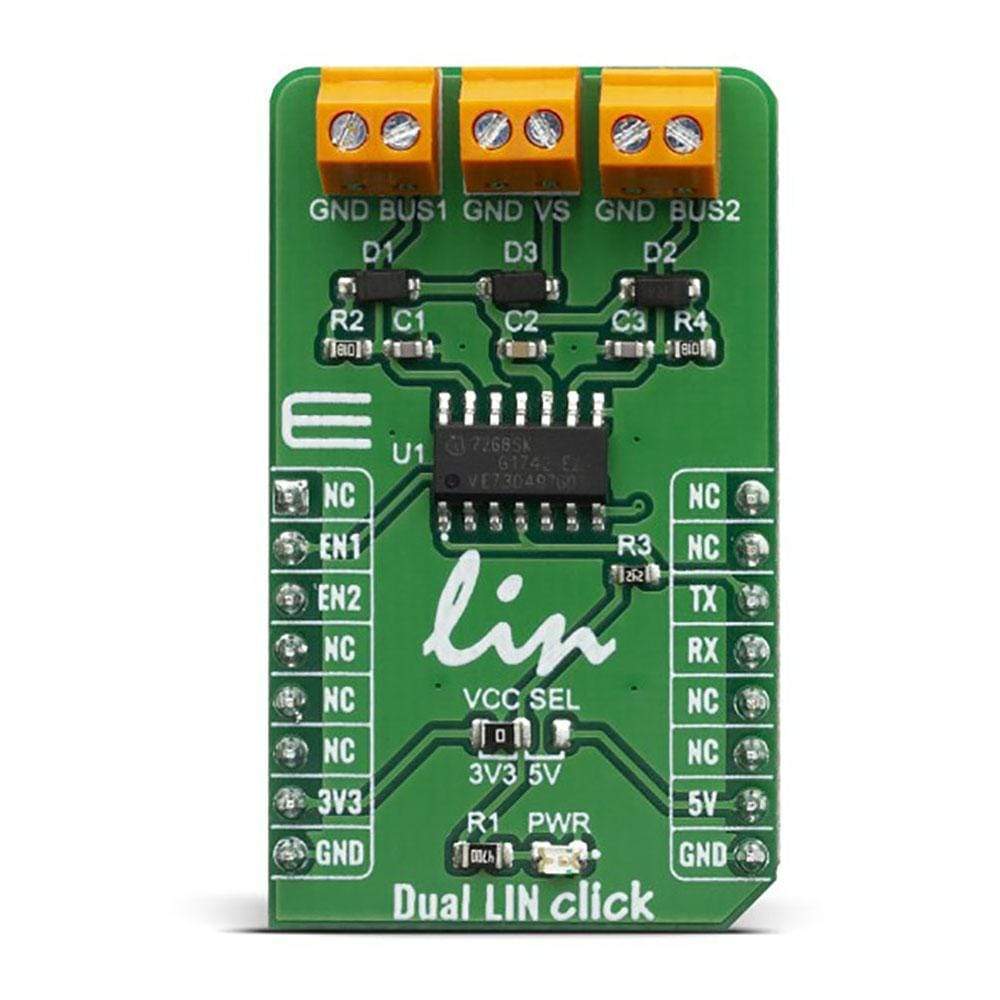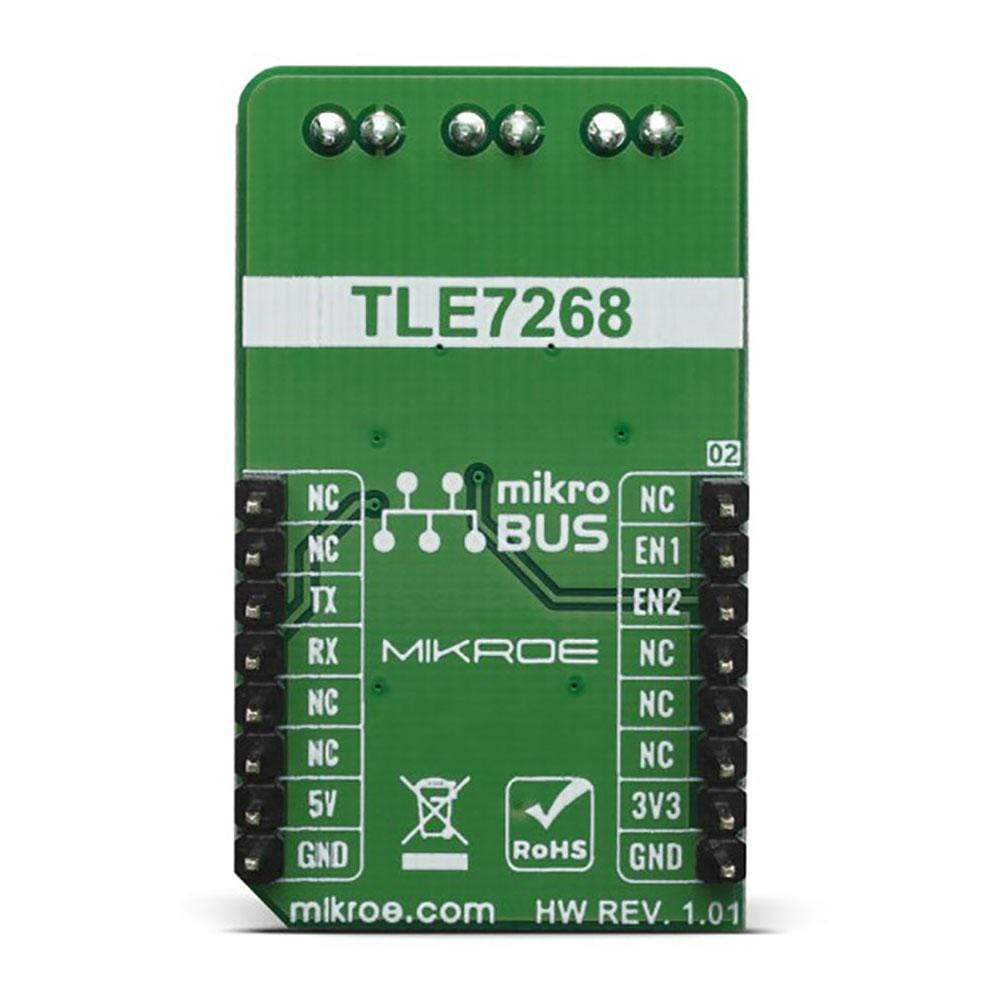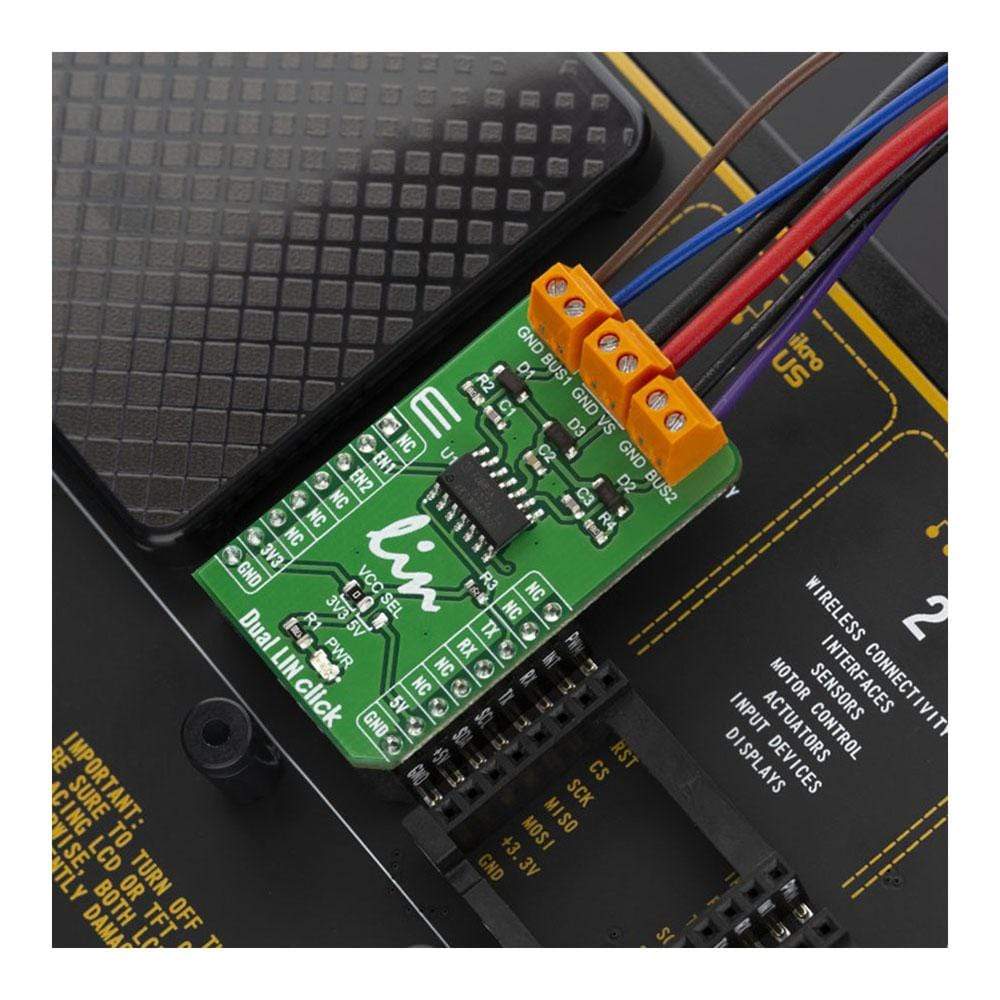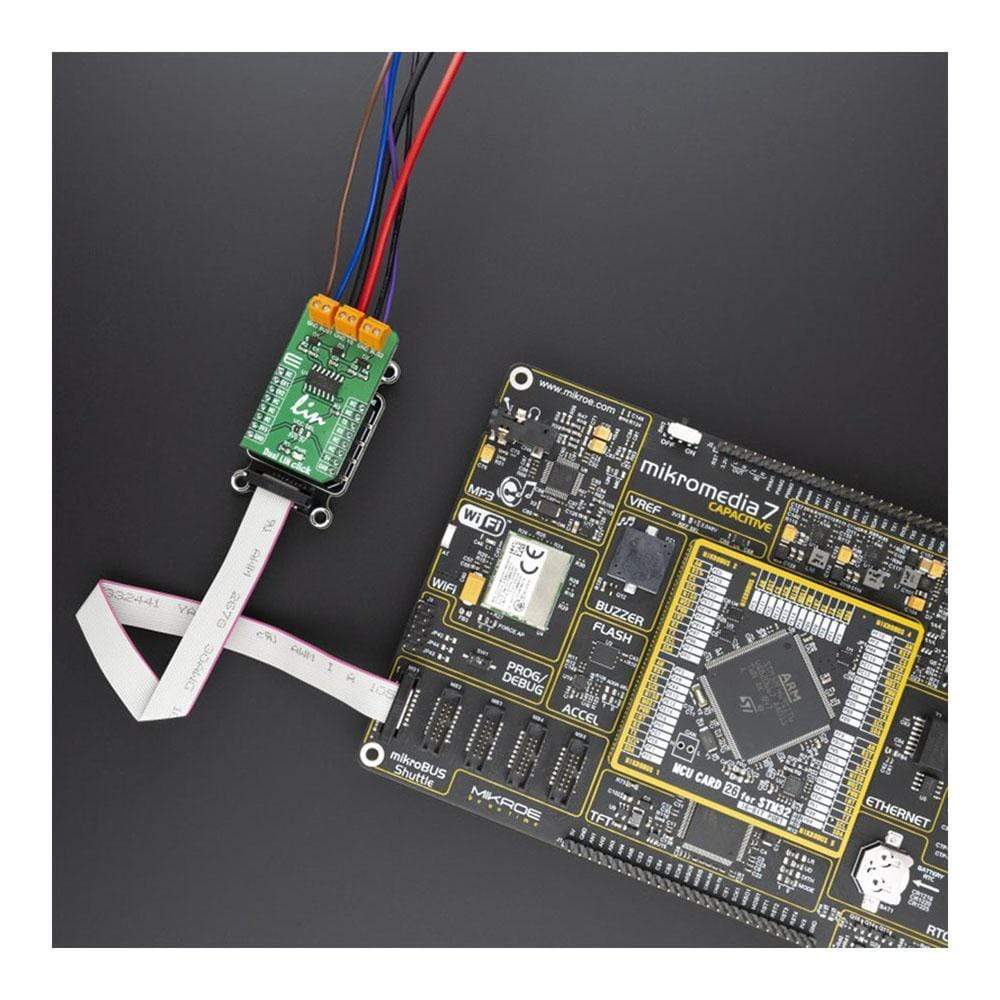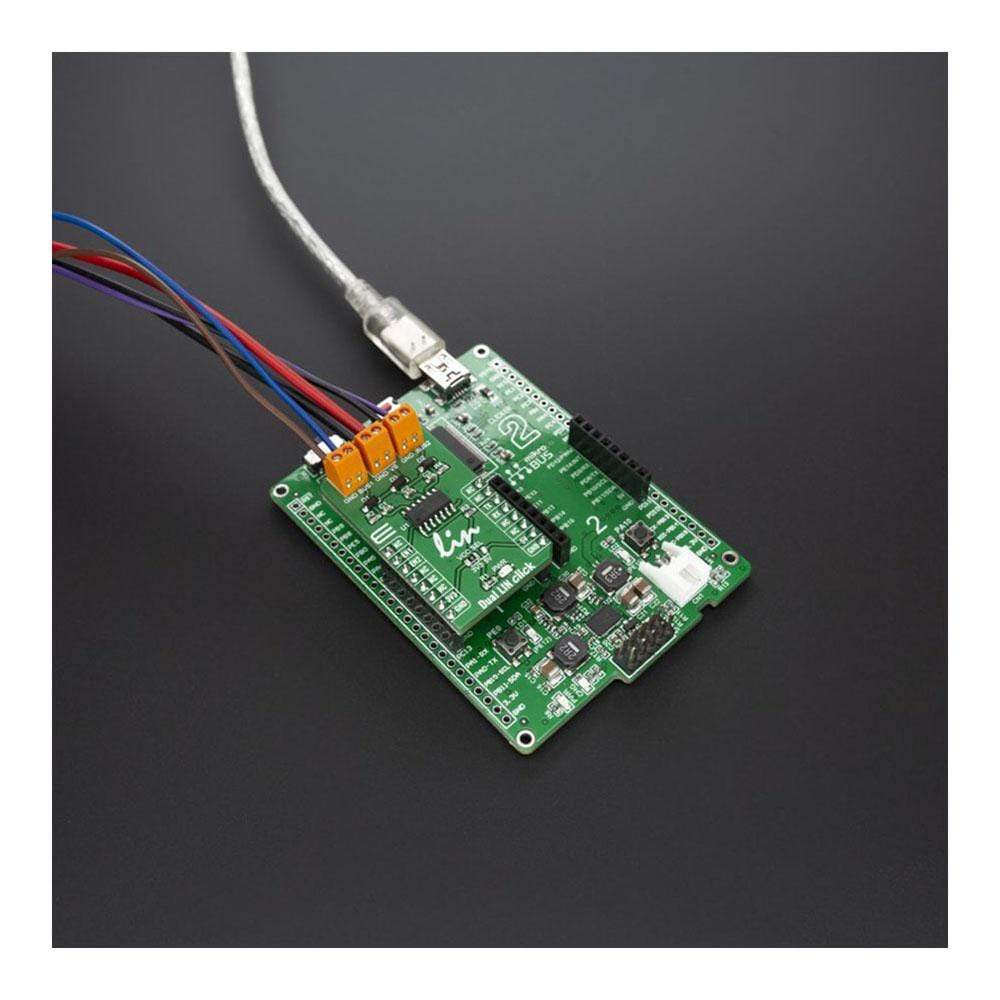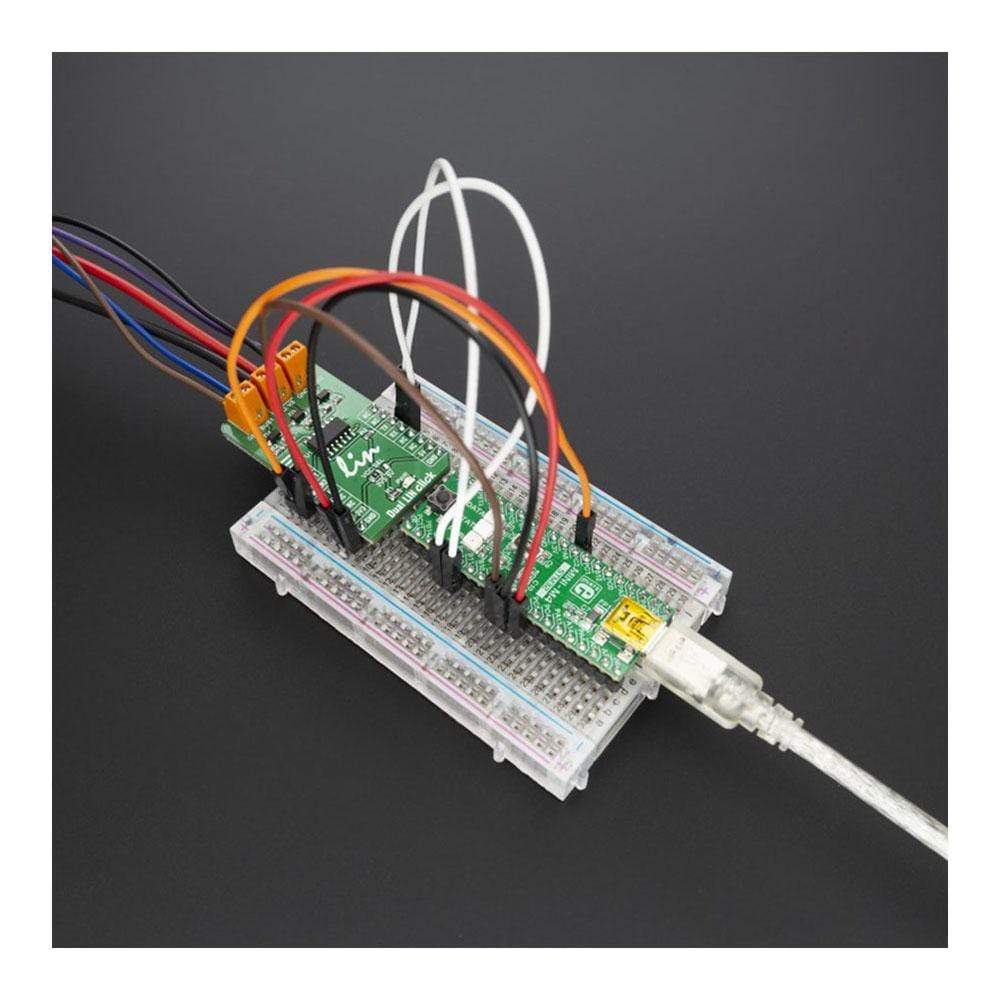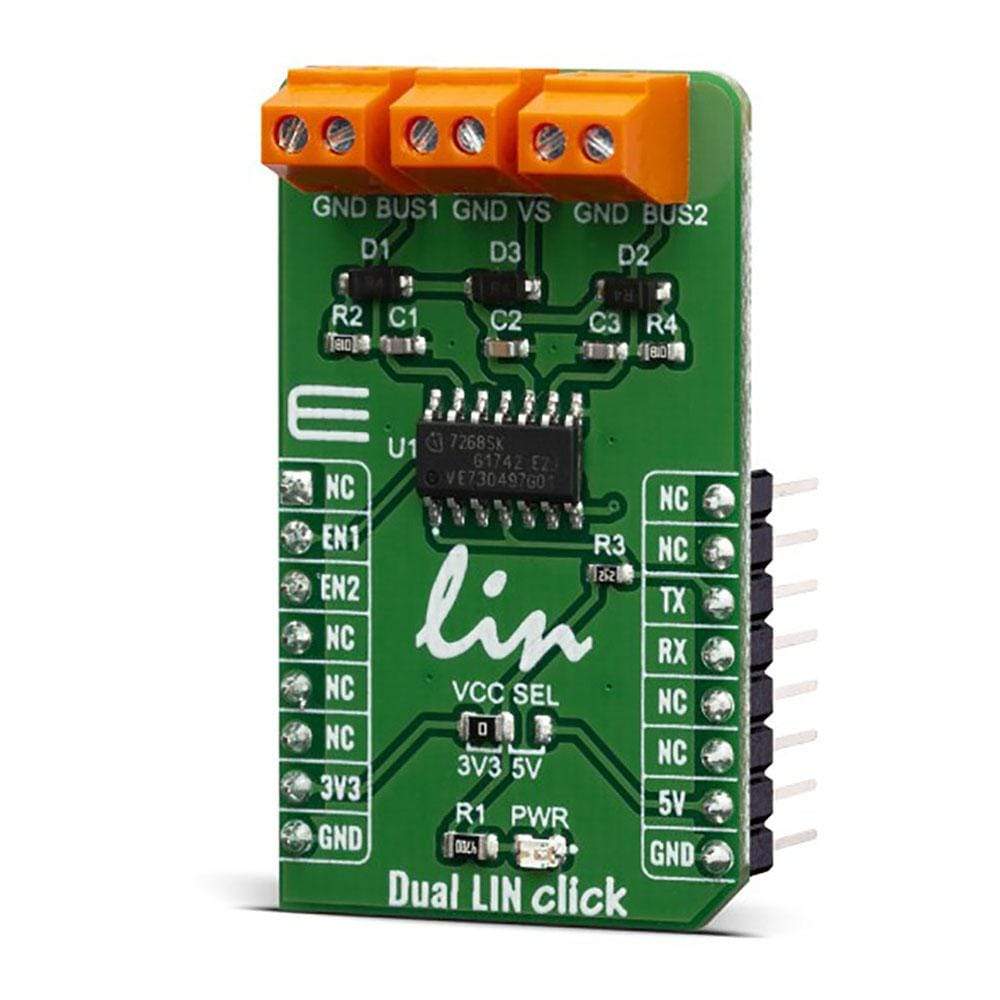
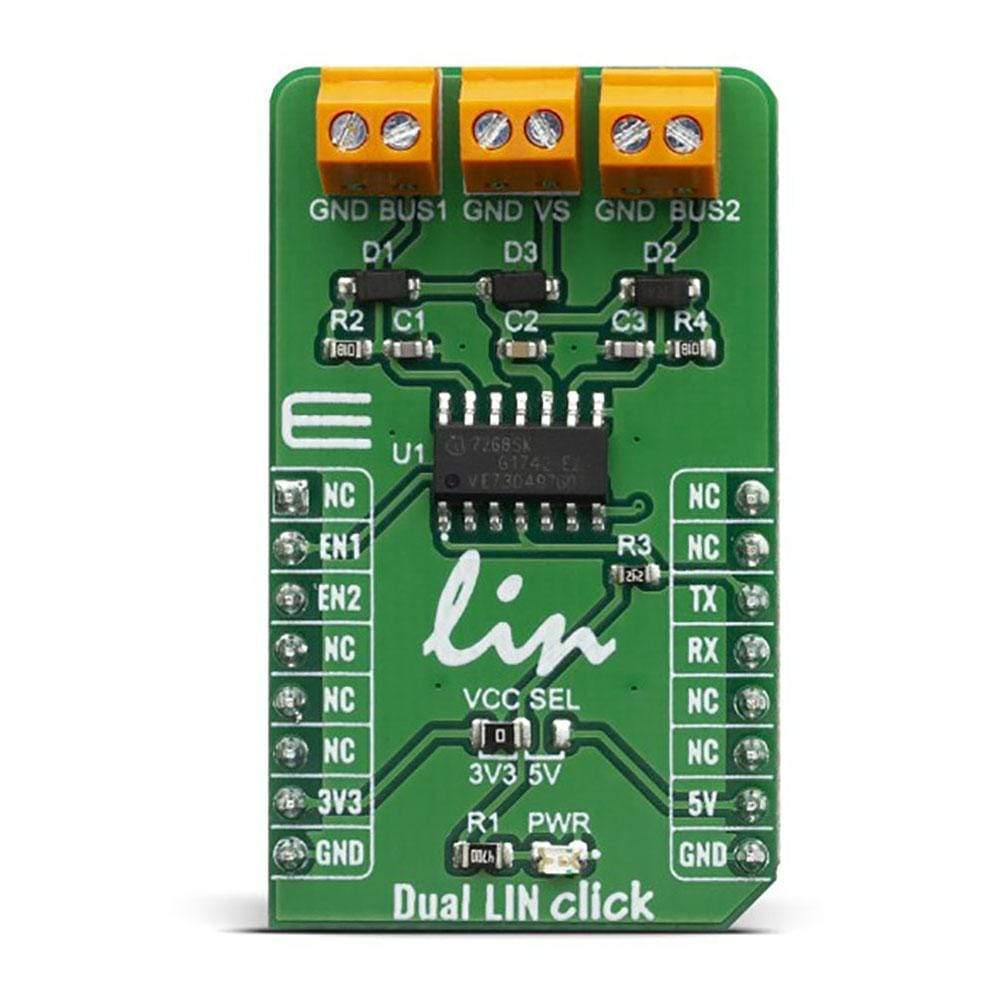
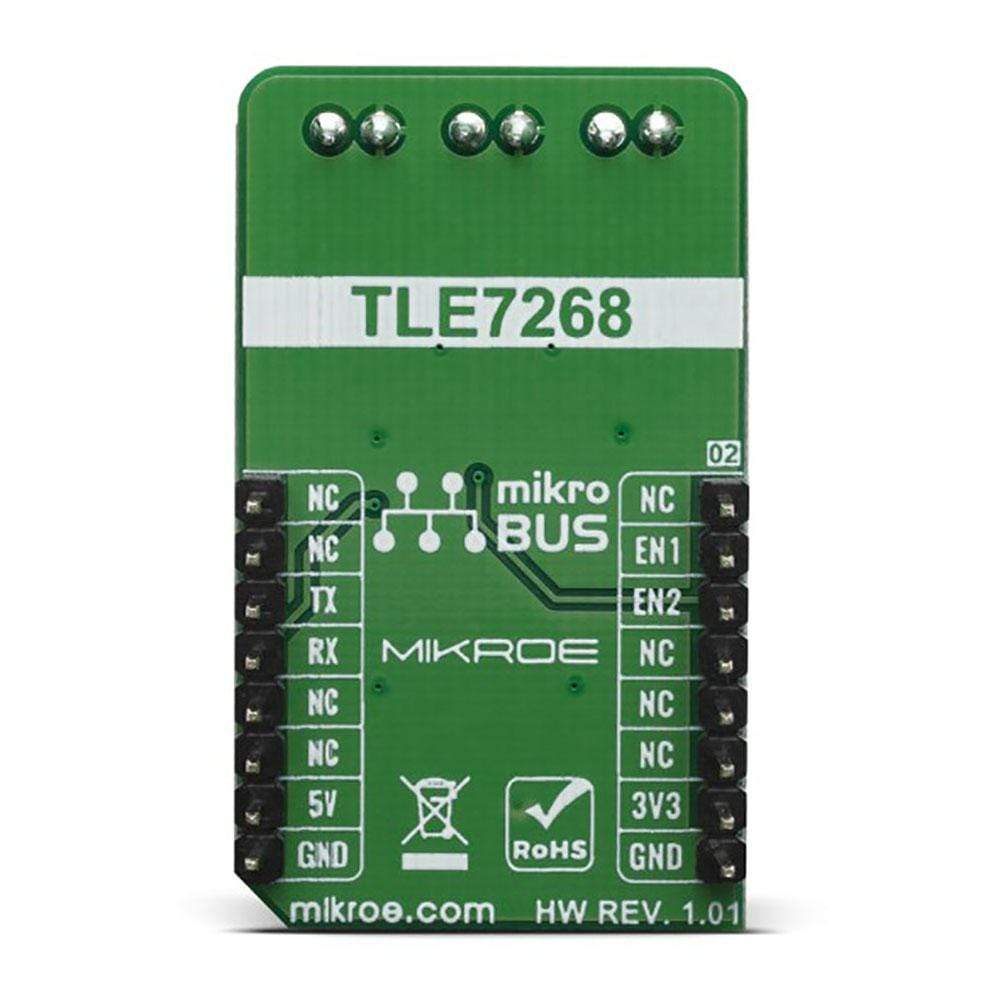
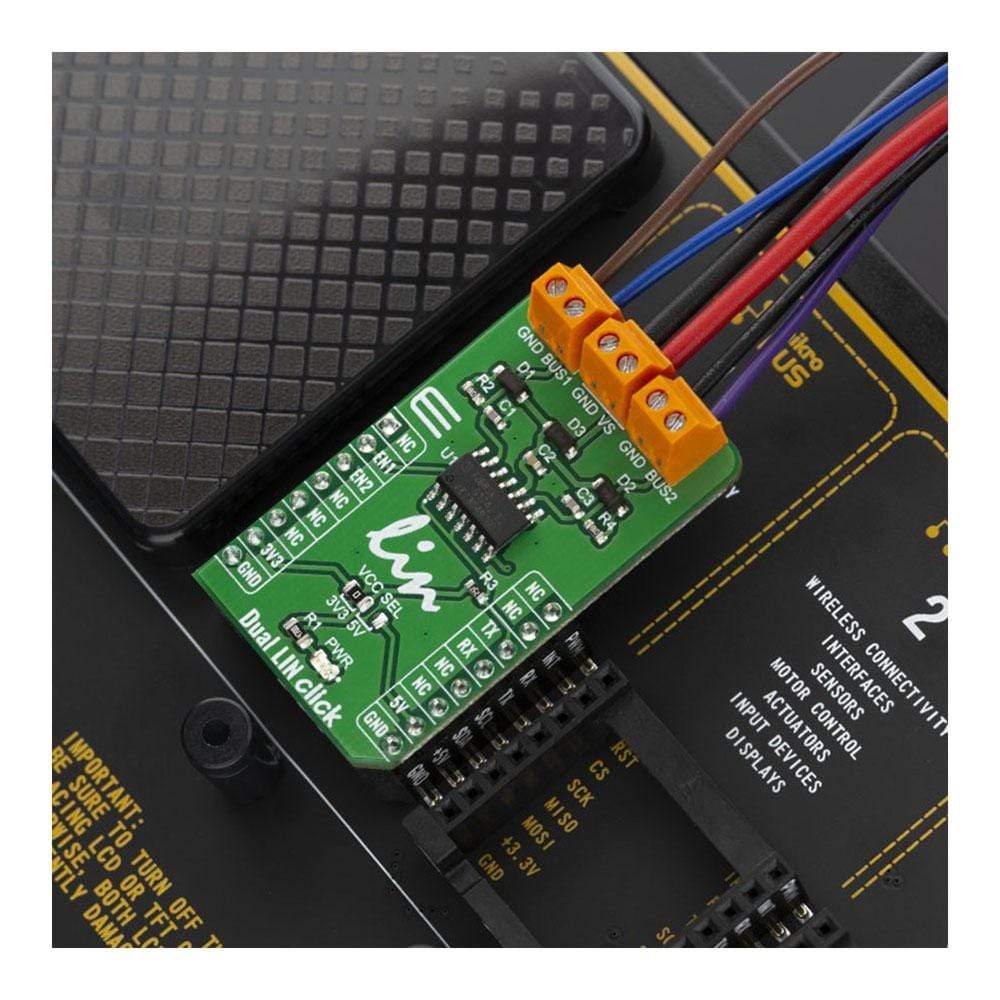
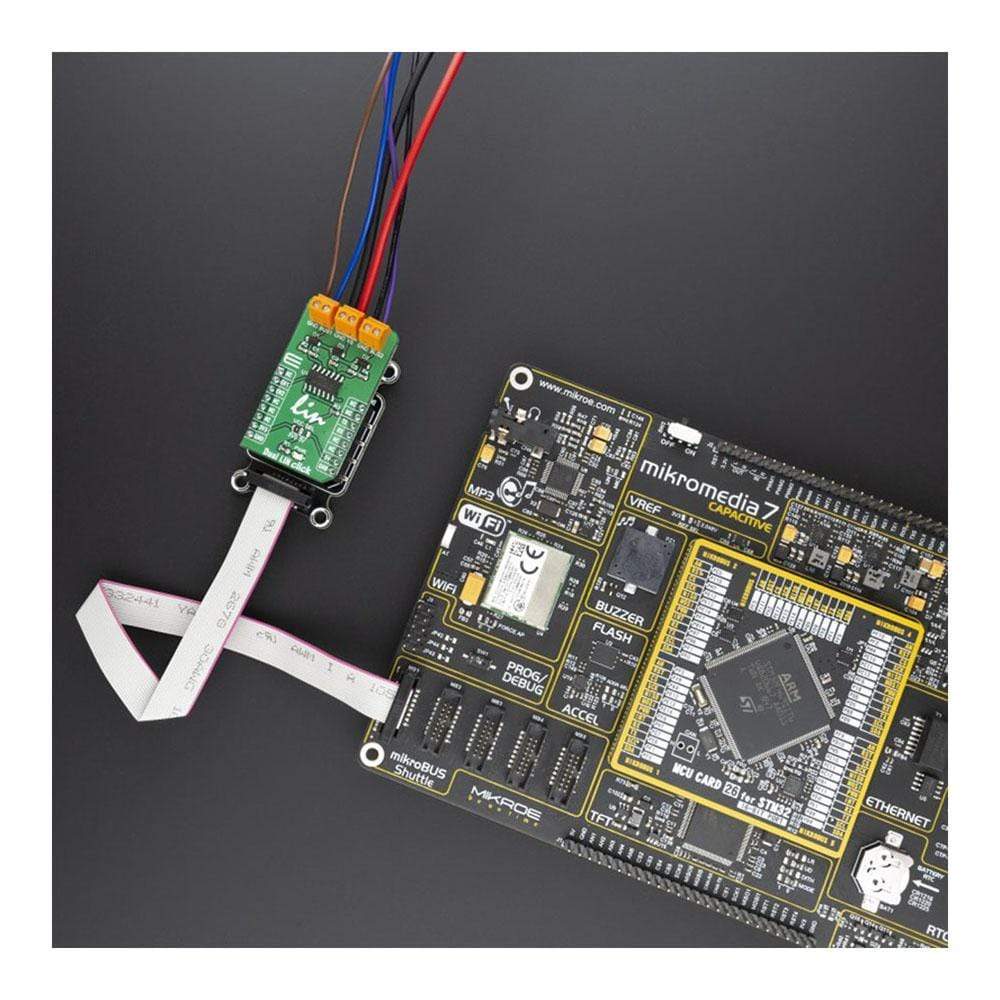
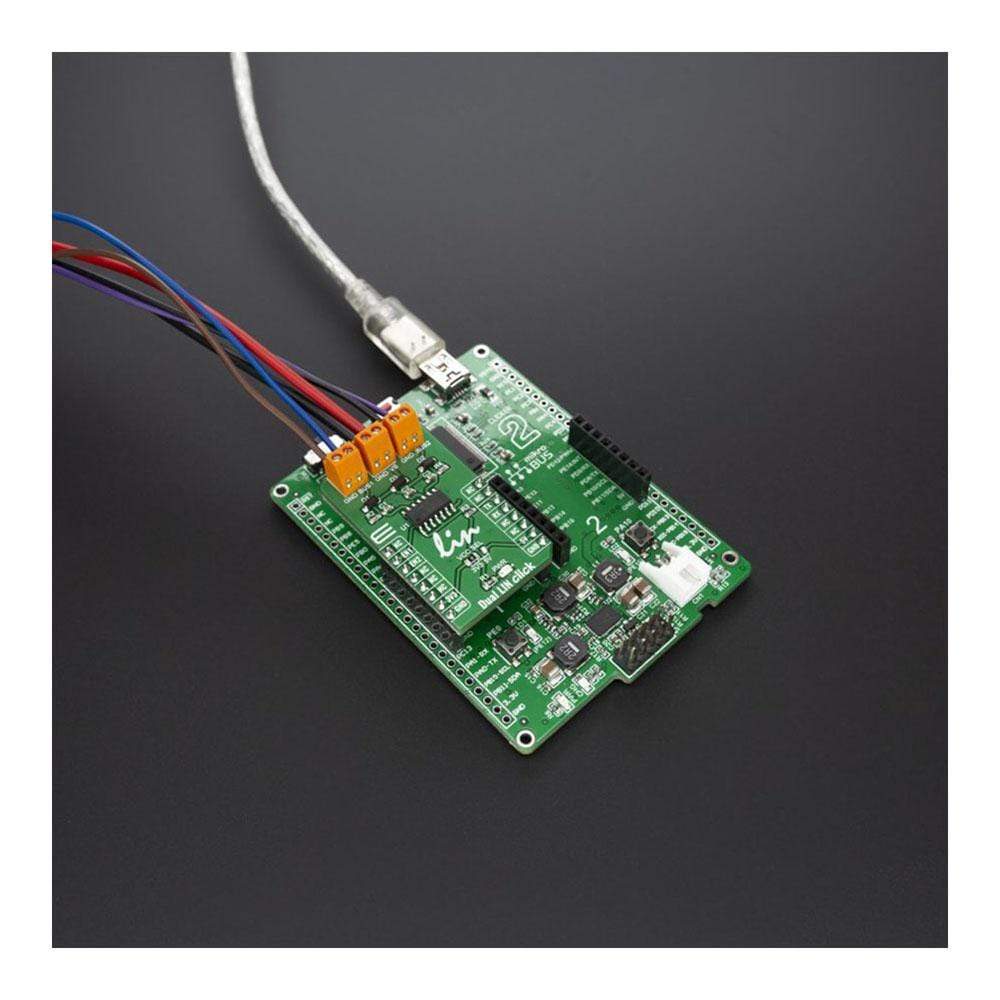
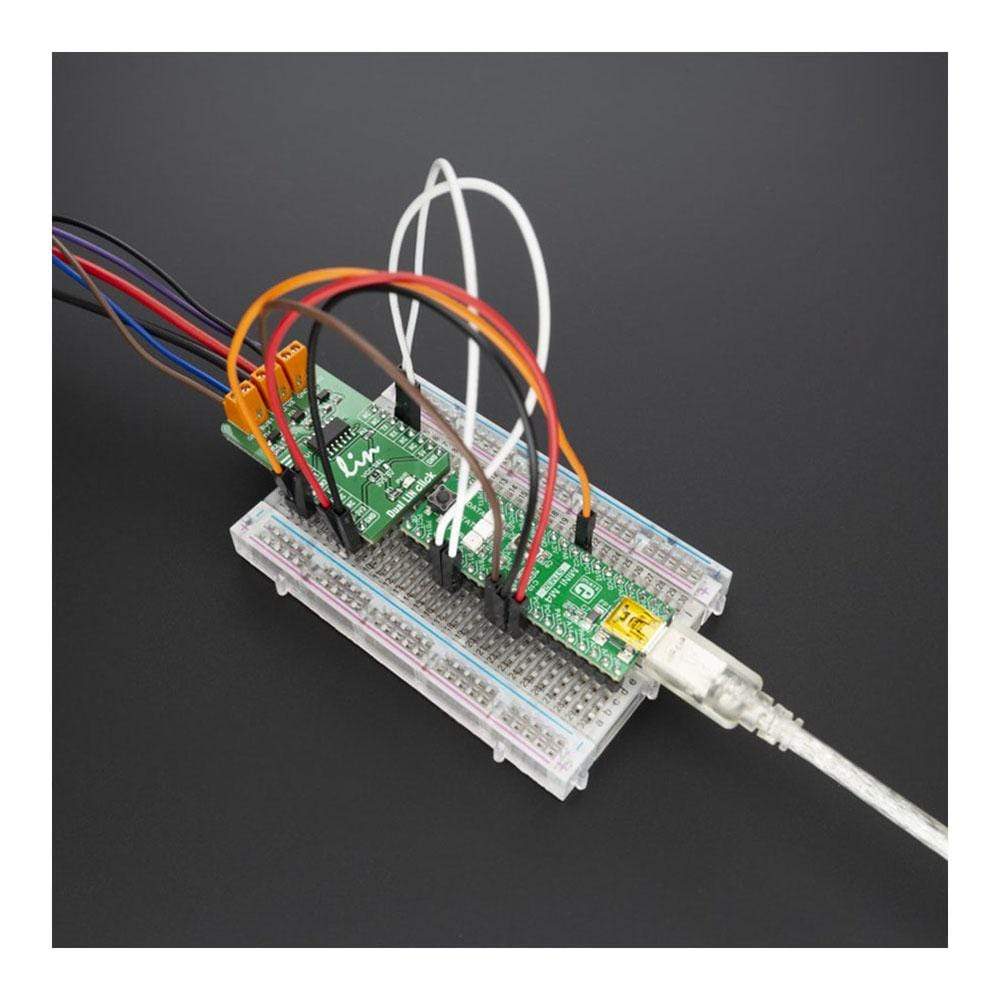
Overview
The Dual LIN Click Board™ is based on the Infineon TLE7268SKXUMA1, a Dual LIN transceiver. Given the features included in this transceiver, the Dual LIN transceiver is designed for data transmission rates up to 20 kbps being fully compliant with the ISO17987-4, LIN specification 2.2A and SAE J2602 standards.
Downloads
Le Dual LIN Click Board™ est basé sur l'Infineon TLE7268SKXUMA1, un émetteur-récepteur Dual LIN. Compte tenu des fonctionnalités incluses dans cet émetteur-récepteur, l'émetteur-récepteur Dual LIN est conçu pour des débits de transmission de données allant jusqu'à 20 kbps et est entièrement conforme aux normes ISO17987-4, spécification LIN 2.2A et SAE J2602.
| General Information | |
|---|---|
Part Number (SKU) |
MIKROE-3870
|
Manufacturer |
|
| Physical and Mechanical | |
Weight |
0.019 kg
|
| Other | |
Country of Origin |
|
HS Code Customs Tariff code
|
|
EAN |
8606018719389
|
Warranty |
|
Frequently Asked Questions
Have a Question?
Be the first to ask a question about this.

